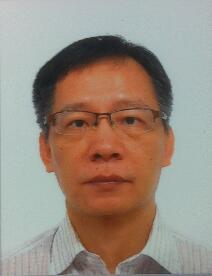
Events

Events
Title:Acoustic Metamaterials and Engineering Applications
Time:14:00 to 16:00, Jan.17, 2019
Place :A701, School of Mechanical Engineering
Host:ZHENG Hui, Professor (Institute of Vibration, Shock & Noise)
Biography
Dr. Cui Fangsen (Cui F.) received his BS and MEng degrees from Engineering Mechanics Department at Xi'an Jiaotong Univers ity in 1984 and 1989, respectively. He completed his PhD work from Mechanical Engineering Department of National University of Singapore (NUS) in 1998, and then joined the Institute of High Performance Computing, A*STAR as a research engineer. He is now a Senior Scientist and team leader in acoustics and biomechanics computing. His research interests lie primarily in developing acoustic devices (muffler, ventilation window, noise barrier, structural health monitoring, etc) and biomedical devices (vascular stents, artificial joints, etc). He is the principal investigator or co-investigator of many grants with total support around 10 millions (in Singapore Dollar). He has several PCT patents and published many papers in both prestigious vibro-acoustic journals and biomedical journals.
ity in 1984 and 1989, respectively. He completed his PhD work from Mechanical Engineering Department of National University of Singapore (NUS) in 1998, and then joined the Institute of High Performance Computing, A*STAR as a research engineer. He is now a Senior Scientist and team leader in acoustics and biomechanics computing. His research interests lie primarily in developing acoustic devices (muffler, ventilation window, noise barrier, structural health monitoring, etc) and biomedical devices (vascular stents, artificial joints, etc). He is the principal investigator or co-investigator of many grants with total support around 10 millions (in Singapore Dollar). He has several PCT patents and published many papers in both prestigious vibro-acoustic journals and biomedical journals.
Dr. Cui is a General Council Member of International Association for Computational Mechanics (IACM) from 2012, Executive Council Member of Asia-Pacific Association for Computational Mechanics (APACM) from 2018, Vice president of International Chinese Association for Computational Mechanics (ICACM) from 2016, and the president of Singapore Association for Computational Mechanics (SACM) from 2017.
Abstract
In this talk, acoustic metamaterials are briefly introduced. Two applications in noise control engineering are then elaborated. The first application is using acoustic metasurfaces (AMS) for ventilation window designs. The feasibility of the AMS with acoustic stop-band property to realize sound insulation with ventilation function is investigated, and an efficient numerical approach is proposed to evaluate its sound insulation performance. The second application is using origami concept for noise barrier designs. The study includes both numerical methods and experimental testing/validation. The absorption performance of the constructed absorber and the insertion loss of the origami barrier are investigated. The proposed origami barrier involves two fundamental mechanisms: sound reflection and absorption, and the origami offers unique tunability to enrich both mechanisms owing to the folding-induced geometric evolutions. We show that acoustic metamaterials have great potentiality in noise control engineering.


Shanghai Jiao Tong University
Address: 800 Dongchuan Road, Shanghai
200240